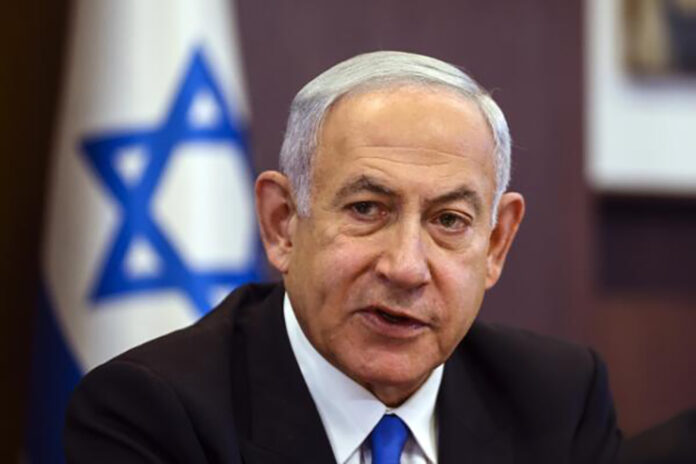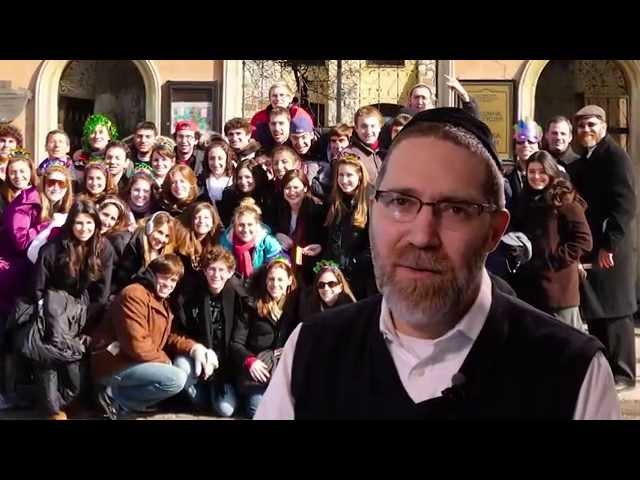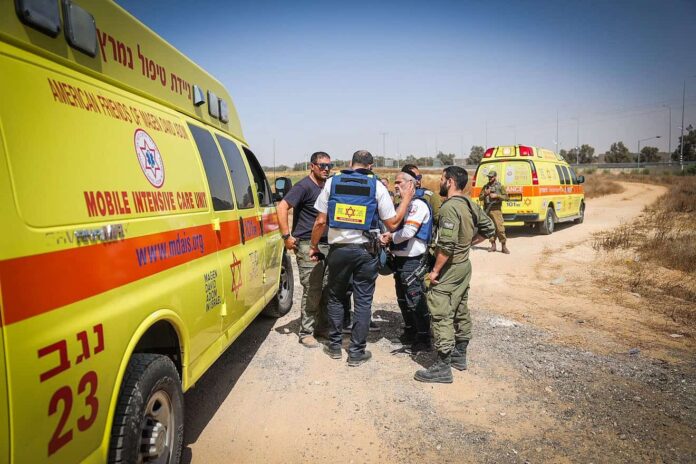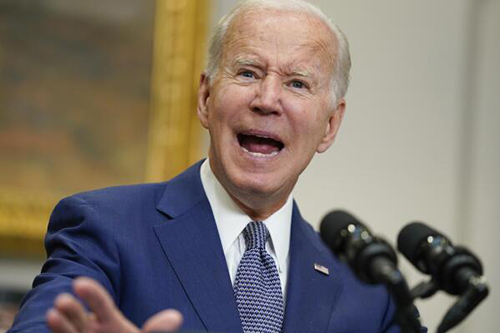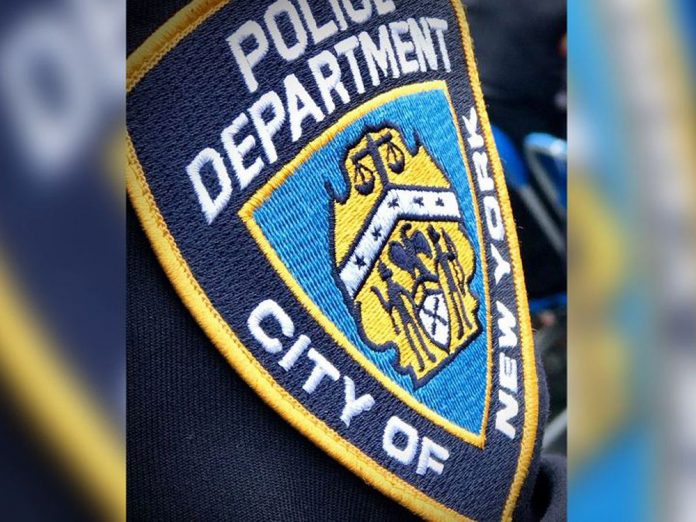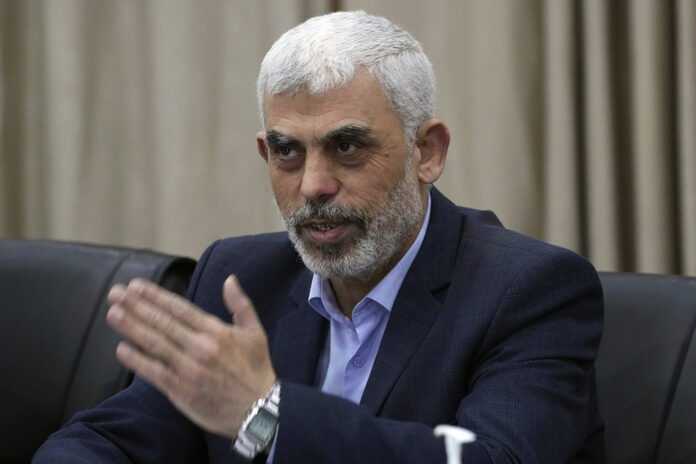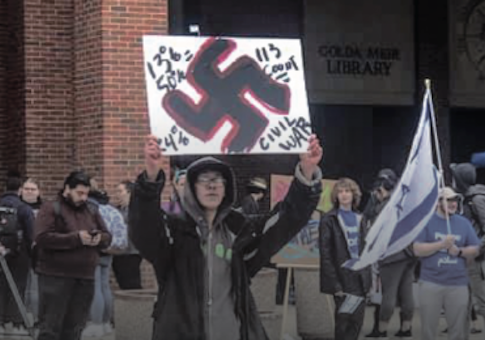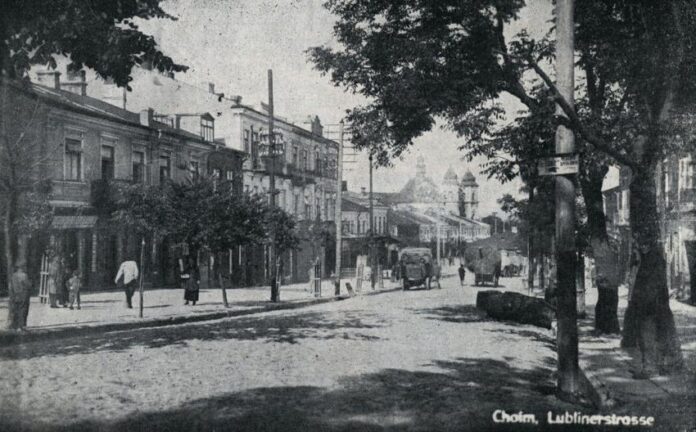Funding Sources for Pro-Hamas Protests Comes Under Scrutiny for Financial Support of Biden
Edited by: Fern Sidman
In recent months, President Joe Biden has found himself the target of intense scrutiny and protest by groups advocating for Palestinian rights, earning him the moniker “Genocide Joe.” According to an eye opening report that appeared on Sunday on the Politico.com web site, these protests, however, unfold against a backdrop of complex financial and ideological connections that link some of the same philanthropists who support these activist groups to efforts pushing for Biden’s reelection.
At the heart of these protests are two notable organizations, Jewish Voice for Peace (JVP) and IfNotNow. Both groups have been active in staging demonstrations at academic institutions such as Columbia University. According to the information provided in the Politico.com report, these organizations are part of a larger network financially supported by the Tides Foundation, a major conduit of funding for various social change initiatives. This foundation itself benefits from the largesse of prominent Democratic benefactors, including George Soros and the Bill and Melinda Gates Foundation. Indicated in the Politico.com report was that Soros, known for his substantial funding of progressive and anti-Israel causes worldwide, as well as the Gates’, whose philanthropic efforts span a broad spectrum of global issues, indirectly support these protests through their contributions to Tides.
Moreover, the web of funding extends to other influential figures in the Democratic Party. David Rockefeller Jr., for instance, is a notable figure in this landscape. As a member of the board of the Rockefeller Brothers Fund, he oversees an organization that in 2022 allocated $300,000 to the Tides Foundation, as was detailed in the Politico.com report. Over the past five years, Tides has funneled nearly $500,000 to JVP, an organization that openly identifies as anti-Zionist.
The Pritzker family, another powerhouse in Democratic circles and heirs to the Hyatt Hotel empire, also emerge as significant players. According to the Politico.com report, Susan and Nick Pritzker have not only contributed directly to Biden’s campaigns but their foundation supports groups involved in the pro-Hamas protests as well.
Critics might argue that this situation illustrates the complex allegiances and influence exerted by major donors, who manage to support seemingly contradictory causes — backing both a president and groups that vociferously criticize him.
Regardless of one’s perspective, it is clear that a small circle of wealthy individuals and families exert significant influence over both the political and activist landscapes. Their financial contributions continue to mold the contours of political debate and public policy in ways that resonate across the political spectrum, illustrating the powerful role that money plays in the democratic process.
Recent developments have seen a surge in pro-Hamas student protests involving more aggressive tactics, including the occupation of university buildings and the voicing of statements that are blatantly anti-Semitic, as was noted in the Politico.com report. These actions have sparked a significant backlash, particularly from prominent donors within the Democratic Party, who are now questioning the implications of their financial contributions to such groups.
One such group, Jewish Voice for Peace, has been at the forefront of these contentious demonstrations. Known for its vocal criticism of Israeli policies and its description of these as apartheid, JVP has not shied away from disruptive protests. Their activities reached a peak when they labeled President Joe Biden a “genocide supporter” during a high-profile fundraiser at Radio City Music Hall in New York. The Politico.com report indicated that this particular incident came on the heels of JVP’s controversial stance on the October 7 attacks, where they pointed to “Israeli apartheid and occupation — and United States complicity in that oppression” as the root causes of the violence, a position that starkly contrasts with mainstream interpretations that squarely assign blame to the Hamas terrorists.
This stance has drawn criticism from within the donor community, including Elisha Wiesel, chair of the Elie Wiesel Foundation, known for its anti-genocide efforts. Speaking to Politico.com, Wiesel openly questioned why the Rockefeller Brothers Fund, a notable financier of various nonprofit initiatives, would support JVP given their controversial positions on such sensitive issues. This inquiry calls attention to a growing concern among donors about the alignment of their philanthropic missions with the activities and rhetoric of grant recipients.
The Rockefeller Brothers Fund, in response to the unfolding controversy, emphasized its commitment to nonpartisan support across a spectrum of policy ideas. Politico.com reported that Sarah Edkins, the fund’s communications director, stated, “Our grantees in all three portfolios support a broad range of policy ideas—some align with the Biden administration’s agenda and others conflict. This complexity is part and parcel of our nonpartisan work.” The Fund also clarified that it does not engage in political campaigning nor does it dictate the day-to-day operations of its grantees.
Also speaking to Politico.com was Kevin Conlon, a seasoned political fundraiser and adviser to nonprofits. He encapsulated this sentiment by acknowledging that there are inevitable moments when a donor’s support might inadvertently fuel actions that contradict their personal views. Having worked closely with figures such as President Joe Biden, Hillary Clinton, and Barack Obama, Conlon brings a nuanced perspective to the philanthropic strategies that underpin political and social campaigns, according to the Politico.com report.
This reality is echoed by voices from within the Jewish community, particularly in response to the recent surge in protests where anti-Semitic sentiments and support for Hamas have been reported. Daniel Goldwin, the public affairs executive director at the Jewish United Fund in Chicago, addressed the growing concerns arising within his community. The report on the Politico.com web site also noted that his organization, which disburses funds to both small local and larger national nonprofits, has been fielding calls from donors distressed by the idea that their contributions might indirectly support objectionable or harmful rhetoric. When speaking with Polltico.com, Goldwin advocated for proactive communication, urging donors to engage directly with organizations to express their concerns and seek clarity on the use of their funds.
The implications of these dynamics are far-reaching, particularly in the political arena. President Joe Biden, who garnered significant support from younger voters in the 2020 elections, finds himself in a precarious position as he attempts to navigate the fallout from the increasing intensity of protests, particularly those at Columbia University, Politico.com reported. These demonstrations have not only heightened scrutiny of Biden’s policies but have also stirred debates about the nature of peaceful protest. The Politico.com report also said that in a recent statement addressing the actions at Columbia, Biden emphatically denounced the destruction of property and disruption of educational activities, asserting that such actions do not constitute peaceful protests but are, in fact, unlawful activities.
Some party insiders suggest these demonstrations may not sway the broader electorate, particularly in a nation where foreign policy traditionally ranks lower on voters’ priority lists, Politico.com pointed out. However, the continuous nature of these protests might present a different scenario as the election season heats up.
Jill Zipin, co-founder and chair of the Democratic Jewish Outreach Pennsylvania, a political action committee aimed at electing Democrats in Pennsylvania, articulated a commonly held view among some party strategists. Zipin downplayed the potential electoral repercussions of the protest movements, particularly those related to U.S. foreign policy stances, suggesting that while the protests are visible now, they may not necessarily resonate as a critical issue come November, according to the information contained in the Politico.com report. Her perspective is rooted in the historical context that American elections seldom pivot solely on foreign policy issues unless they directly impact a significant portion of the electorate.
Conversely, Omar Wasow, a scholar who has extensively studied protest movements and their impact on political landscapes, offered a more nuanced view when speaking with Politico.com. Wasow suggested that the persistence of protests could elevate their significance in the public consciousness, particularly if they continue to escalate as the election approaches. Noted in the Politico.com report was that his analysis implies that while Americans typically exhibit a lukewarm interest in foreign policy, the ongoing visibility of such protests could shift this dynamic, especially if they begin to intersect more visibly with domestic concerns.
Further complicating the situation is the involvement of various nonprofits in these protests, many of which do not primarily focus on foreign policy but have found themselves increasingly drawn into these debates. Organizations such as Solidaire Action, represented by spokesperson Barni Qaasim, illustrate this trend. Solidaire Action funds social justice movements and, according to Qaasim, many of its members are engaged in actions aimed at holding President Biden accountable, as per the Politico.com report.
This layer of complexity is evident as nonprofits traditionally focused on domestic issues find themselves aligning with movements that have a strong foreign policy component. This alignment suggests a broader mobilization among grassroots organizations, which, while not directly opposing the Biden administration, are vocal in their demands for more definitive actions on international issues. This dynamic indicates a growing recognition within these groups that global issues such as those unfolding in the Middle East increasingly bear implications for domestic policies and political alignments.
The Pritzkers, known for their philanthropic endeavors through entities such as the Libra Foundation, have a broad impact on various social issues ranging from criminal justice to environmental and gender justice. This influence extends into more contentious areas, such as the funding of organizations involved in the protests following the October 7th attack by Hamas. Politico.com reported that notable among these are groups such as the Climate Justice Alliance, Black Organizing for Leadership and Dignity, and the Immigrant Defense Project. These groups have participated in and supported protests that have included harsh critiques of U.S. policies and leadership, including slogans such as “Genocide Joe.”
The involvement of the Libra Foundation in these areas sheds light on the complex decisions that donors face when their contributions might indirectly support activism that goes beyond their original philanthropic intent. For instance, Politico.com reported that the Climate Justice Alliance’s participation in pro-Palestinian marches and Black Organizing for Leadership and Dignity’s promotional activities for these demonstrations illustrate the breadth of issues that intertwine with environmental and social justice causes.
Revealed in the Politico.com report was that The Tides Foundation, another significant player funded in part by the Pritzkers, also supports organizations such the Adalah Justice Project and Palestine Legal. The Adalah Justice Project, known for its critical stance on university investments in companies that do business with Israel was involved in protests at Columbia University, Politico.com reported. Meanwhile, Palestine Legal provides legal support to pro-Hamas activists.
Some donors, as noted by Democratic fundraiser Kevin Conlon, may find themselves reconsidering their philanthropic strategies in light of the controversial outcomes associated with their donations, as was suggested in the Politico.com report.

